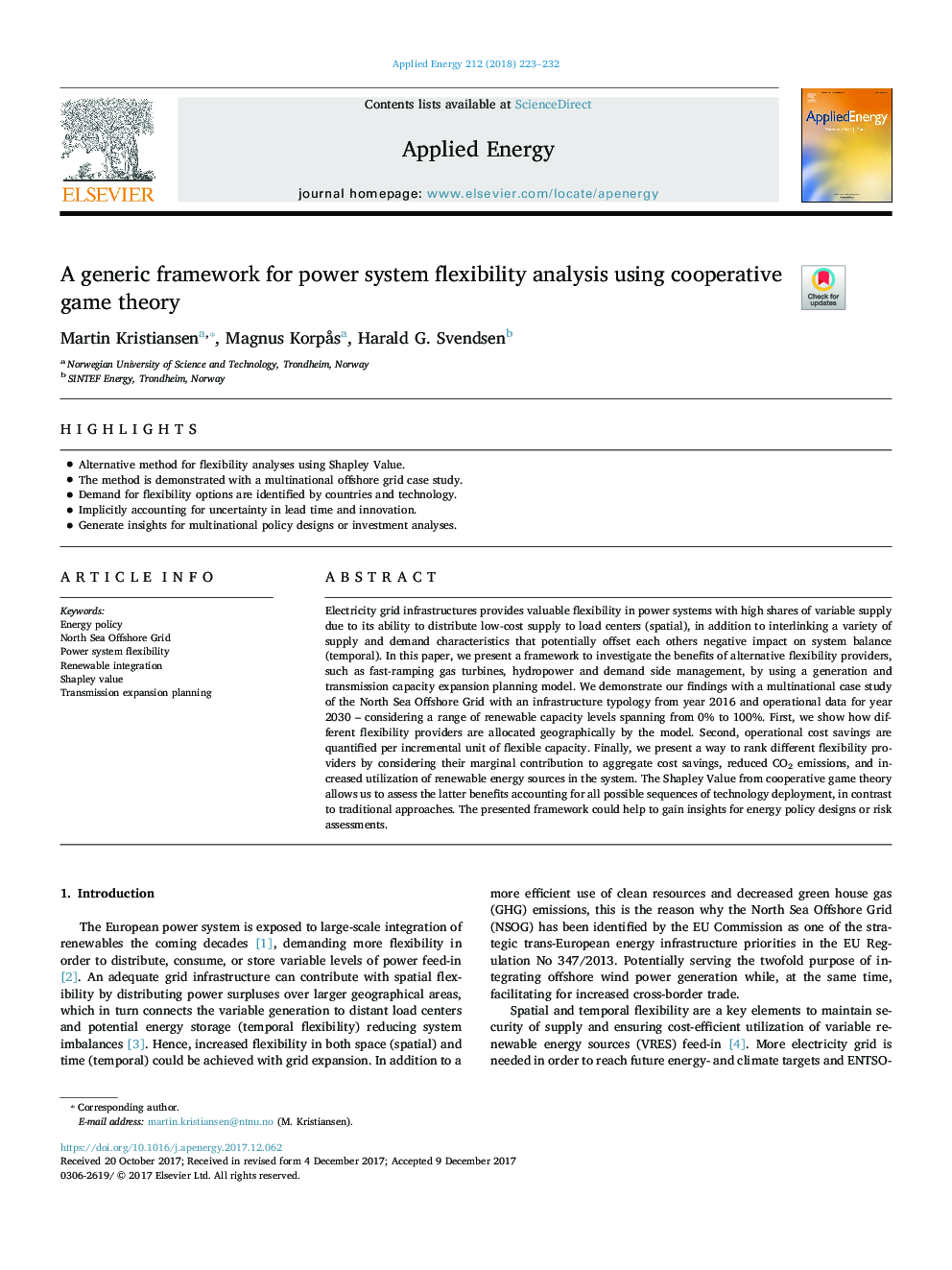| Article ID | Journal | Published Year | Pages | File Type |
|---|---|---|---|---|
| 6680896 | Applied Energy | 2018 | 10 Pages |
Abstract
Electricity grid infrastructures provides valuable flexibility in power systems with high shares of variable supply due to its ability to distribute low-cost supply to load centers (spatial), in addition to interlinking a variety of supply and demand characteristics that potentially offset each others negative impact on system balance (temporal). In this paper, we present a framework to investigate the benefits of alternative flexibility providers, such as fast-ramping gas turbines, hydropower and demand side management, by using a generation and transmission capacity expansion planning model. We demonstrate our findings with a multinational case study of the North Sea Offshore Grid with an infrastructure typology from year 2016 and operational data for year 2030 - considering a range of renewable capacity levels spanning from 0% to 100%. First, we show how different flexibility providers are allocated geographically by the model. Second, operational cost savings are quantified per incremental unit of flexible capacity. Finally, we present a way to rank different flexibility providers by considering their marginal contribution to aggregate cost savings, reduced CO2 emissions, and increased utilization of renewable energy sources in the system. The Shapley Value from cooperative game theory allows us to assess the latter benefits accounting for all possible sequences of technology deployment, in contrast to traditional approaches. The presented framework could help to gain insights for energy policy designs or risk assessments.
Keywords
Related Topics
Physical Sciences and Engineering
Energy
Energy Engineering and Power Technology
Authors
Martin Kristiansen, Magnus Korpås, Harald G. Svendsen,
